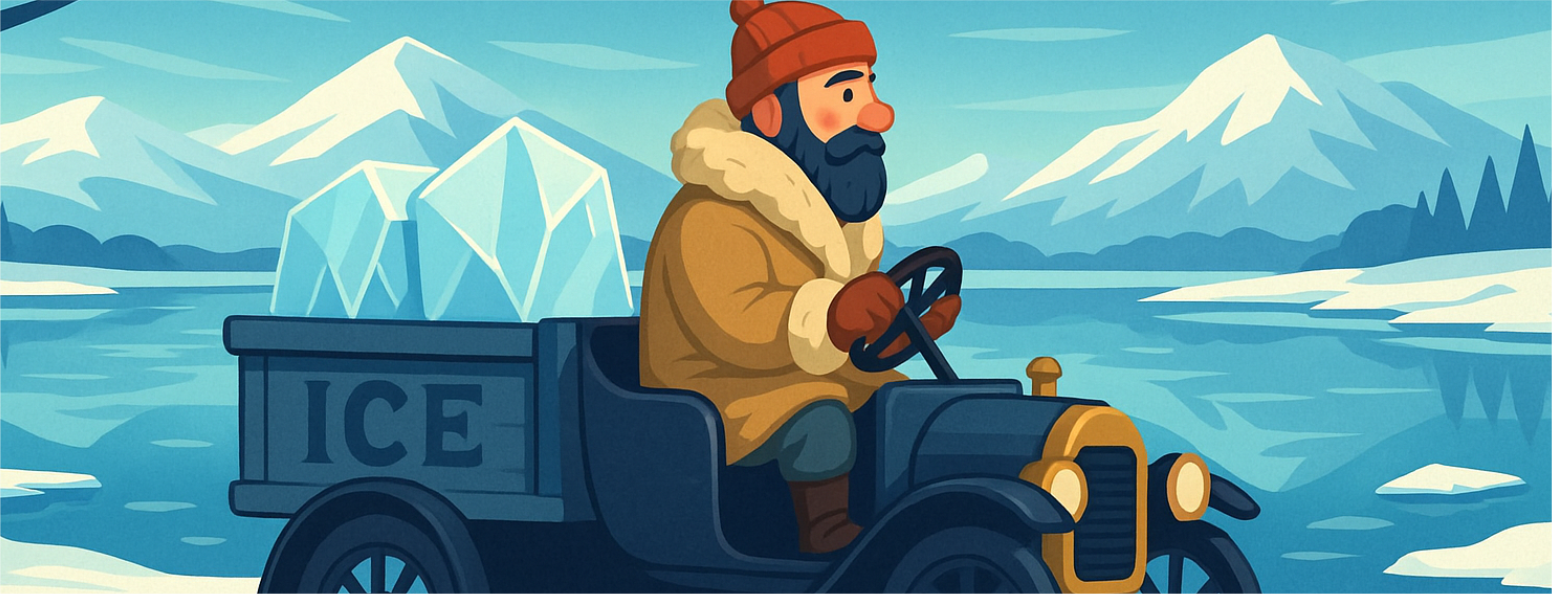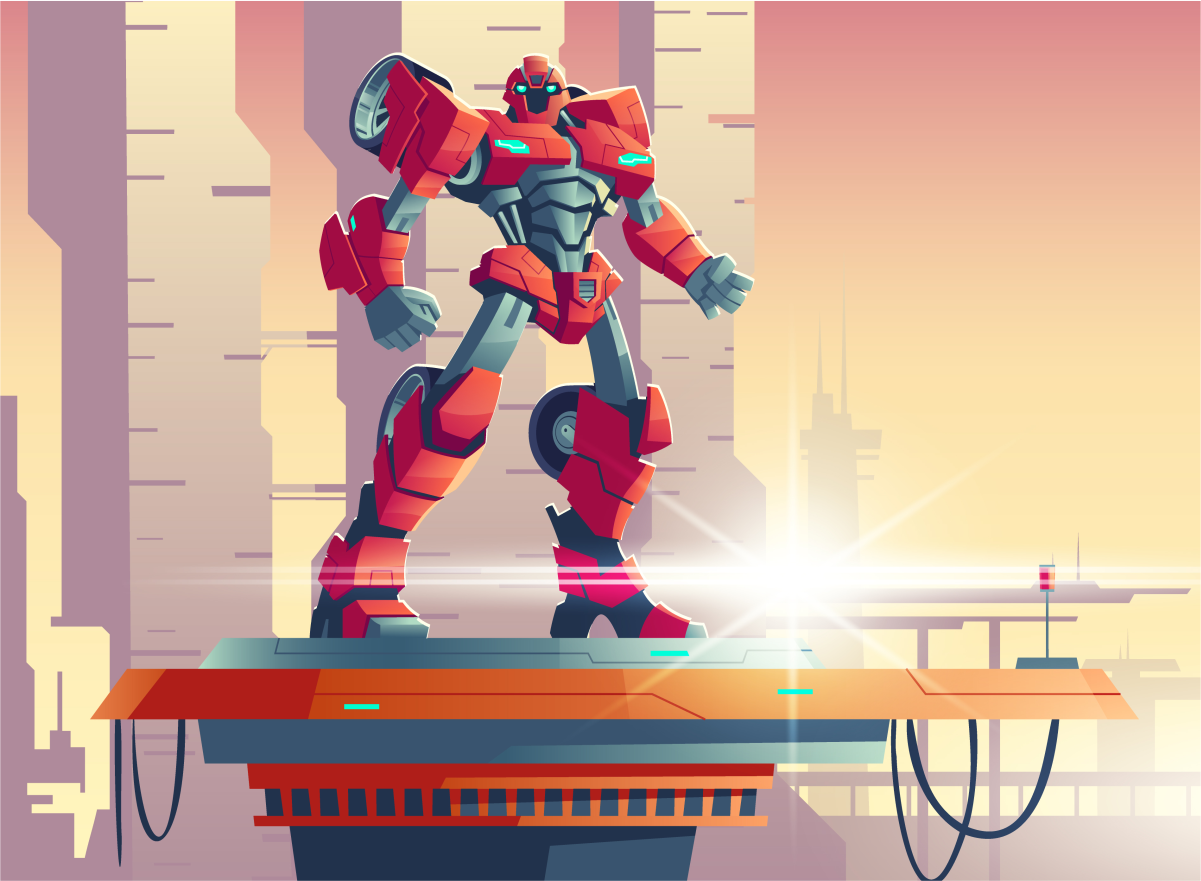The Digital Iceman
- ArtificialIntelligence
- AIInSoftwareDevelopment
- FutureOfProgramming
- DigitalTransformation
- SoftwareEngineering
- TechLeadership
- AIAssistants
- ProductivityTools
- NaturalIntelligence
- DeveloperMindset
- SoftwareInnovation
- AIandJobs
- CodeGeneration
- HumanVsMachine
- BusinessAndAI

As I write these lines, artificial intelligence is no longer the future—it’s the present. In developer circles, AI-powered programming tools aren’t just emerging—they’re becoming an everyday reality. As an IT entrepreneur who spent years writing code myself, I find it essential to reflect on what this means—for me, for our industry, for our clients.
Every day, we hear the news: major tech companies are laying off thousands of developers. First, we’re stunned—then the questions follow. Is development becoming cheaper? Are salaries declining? What happens to all the “regular” programmers if AI really does take over routine tasks—and possibly more?
Efficiency is not the enemy—it’s a tool
In my view, the panic is temporary. History has shown us this time and again: steam engines, cars, refrigerators—all replaced older ways of doing things. Yes, some lost out in the short term, but long-term, humanity always adapted—and progressed.
I believe budgets and salaries in software development won’t vanish. Instead, the expectations for what we can deliver with the same budget will rise—dramatically. That’s not a threat. That’s an opportunity. One we should seize.
In the early 20th century, icemen delivered blocks of ice to homes—until refrigerators made them obsolete. Today, some developers face a similar fate. Those who only know how to code, but resist learning to lead, design, or adapt, risk becoming the digital equivalent of the iceman: skilled, but left behind by a world that moved on. The future belongs to those who embrace change, harness AI, and keep adding human value where it matters most.
The Iceman Syndrome
In the early 20th century, “icemen” used to deliver ice to households for food storage. Then came refrigerators—and the icemen disappeared. Today, we’re on the verge of a similar revolution in software: only now we’re replacing not ice, but code itself, with ready-made, functional solutions.
The barrier to entry in this field has always been dropping. First it was machine code, then Assembly, then high-level languages, then RAD tools—and now AI. Developers who only want to code (or only know how to code) and don’t want to embrace UX design, system architecture, distributed systems, or real-world business problem solving—they’re in for a tough ride. They’re becoming the digital icemen.
Developers now manage machines
Here’s the twist: every developer today effectively has their own “team” of AI-powered assistants—code generators, test bots, documentation helpers. But these tools need management too. I see it among my colleagues: they talk about AI like it’s a junior intern. “I asked it to do this, but it gave me something else.”
And then, for the first time, they experience what only we managers used to: the frustration of paying for something, only to receive the wrong result. It’s annoying—but also instructive. Those who learn from this grow. Those who don’t… fall behind.
What machines still can’t do (yet)
AI doesn’t plan, feel, or anticipate—at least not the way experienced developers or architects do. Creativity, intuition, and emotional intelligence—these are still human strengths. And at our company, we’re working hard to make sure our colleagues always stay one step ahead of AI.
The goal isn’t to type faster. It’s to understand better. Understand the problem, the context, the people. Anything a machine can also do will eventually become cheap. What retains value is what only we can contribute.
This isn’t the end—it’s a new beginning
Honestly, I welcome this shift. Today, we can build software in minutes that would’ve seemed like magic a decade ago. And soon, our clients will experience these capabilities firsthand.
And yes—this article was also created with AI. I dictated my thoughts, then asked AI to structure them into a coherent piece. But I reviewed it, edited it, and take full responsibility for it—just like I would with code.
The illustration accompanying this article was also AI-generated, precisely in the style I imagined: a vintage iceman from the early 1900s, beside a classic truck on a snowy lakeside. A perfect metaphor. But it wasn’t that easy: this image is actually the third iteration. The first two were ridiculous—the iceman carried the ice on his back, without tools, looking more like a caveman. If I hadn’t stepped in, the result would’ve been laughable. My added value? A precise prompt and critical review. That’s what made it work.
Because AI can read everything ever uploaded to the internet—but those who’ve created truly great things? They didn’t learn it from school or textbooks. They imagined what didn’t exist yet—often driven by frustration, rebellion, or pain.
That’s the kind of natural intelligence we still bring to the table. That’s our job. Our responsibility. Our added value. And we’ll always be one step ahead of AI.




 The website includes cookies
The website includes cookies